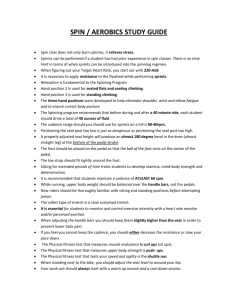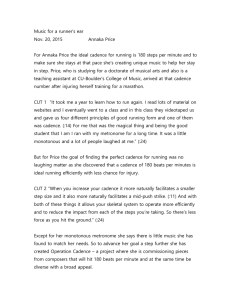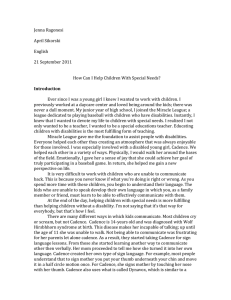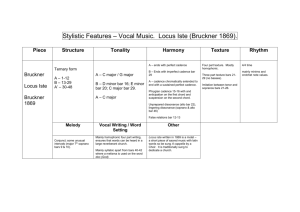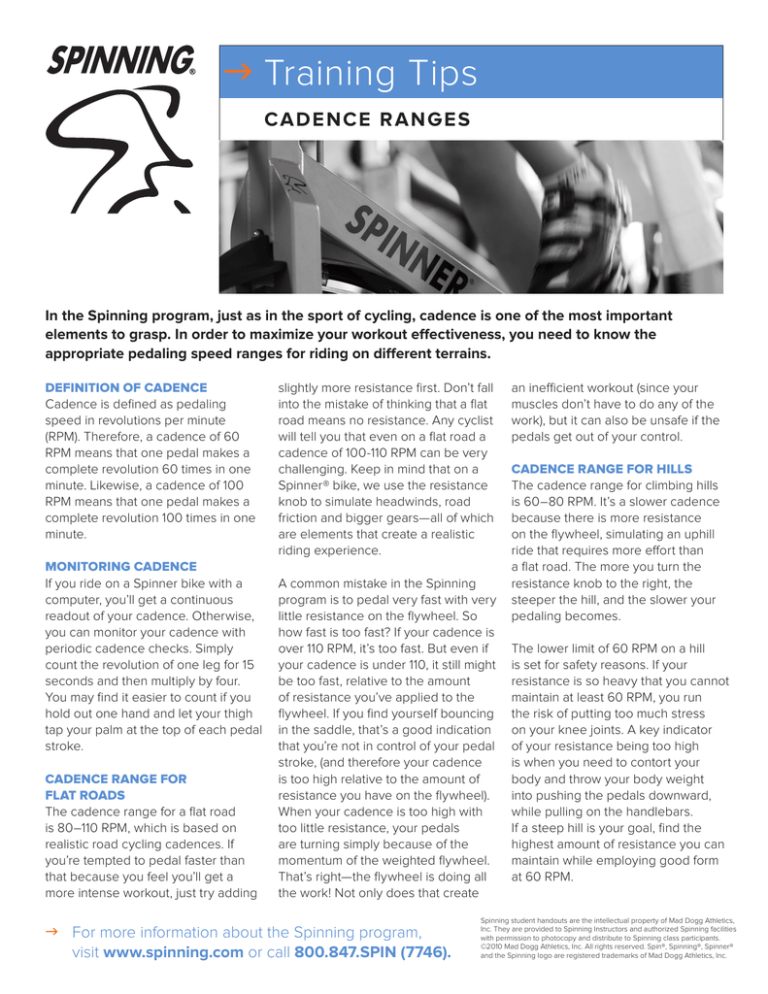
g Training Tips
Ca d e n c e R a n g e s
In the Spinning program, just as in the sport of cycling, cadence is one of the most important
elements to grasp. In order to maximize your workout effectiveness, you need to know the
appropriate pedaling speed ranges for riding on different terrains.
DEFINITION OF CADENCE
Cadence is defined as pedaling
speed in revolutions per minute
(RPM). Therefore, a cadence of 60
RPM means that one pedal makes a
complete revolution 60 times in one
minute. Likewise, a cadence of 100
RPM means that one pedal makes a
complete revolution 100 times in one
minute.
MONITORING CADENCE
If you ride on a Spinner bike with a
computer, you’ll get a continuous
readout of your cadence. Otherwise,
you can monitor your cadence with
periodic cadence checks. Simply
count the revolution of one leg for 15
seconds and then multiply by four.
You may find it easier to count if you
hold out one hand and let your thigh
tap your palm at the top of each pedal
stroke.
CADENCE RANGE FOR
FLAT ROADS
The cadence range for a flat road
is 80–110 RPM, which is based on
realistic road cycling cadences. If
you’re tempted to pedal faster than
that because you feel you’ll get a
more intense workout, just try adding
slightly more resistance first. Don’t fall
into the mistake of thinking that a flat
road means no resistance. Any cyclist
will tell you that even on a flat road a
cadence of 100-110 RPM can be very
challenging. Keep in mind that on a
Spinner® bike, we use the resistance
knob to simulate headwinds, road
friction and bigger gears—all of which
are elements that create a realistic
riding experience.
A common mistake in the Spinning
program is to pedal very fast with very
little resistance on the flywheel. So
how fast is too fast? If your cadence is
over 110 RPM, it’s too fast. But even if
your cadence is under 110, it still might
be too fast, relative to the amount
of resistance you’ve applied to the
flywheel. If you find yourself bouncing
in the saddle, that’s a good indication
that you’re not in control of your pedal
stroke, (and therefore your cadence
is too high relative to the amount of
resistance you have on the flywheel).
When your cadence is too high with
too little resistance, your pedals
are turning simply because of the
momentum of the weighted flywheel.
That’s right—the flywheel is doing all
the work! Not only does that create
gFor more information about the Spinning program,
visit www.spinning.com or call 800.847.SPIN (7746).
an inefficient workout (since your
muscles don’t have to do any of the
work), but it can also be unsafe if the
pedals get out of your control.
CADENCE RANGE FOR HILLS
The cadence range for climbing hills
is 60–80 RPM. It’s a slower cadence
because there is more resistance
on the flywheel, simulating an uphill
ride that requires more effort than
a flat road. The more you turn the
resistance knob to the right, the
steeper the hill, and the slower your
pedaling becomes.
The lower limit of 60 RPM on a hill
is set for safety reasons. If your
resistance is so heavy that you cannot
maintain at least 60 RPM, you run
the risk of putting too much stress
on your knee joints. A key indicator
of your resistance being too high
is when you need to contort your
body and throw your body weight
into pushing the pedals downward,
while pulling on the handlebars.
If a steep hill is your goal, find the
highest amount of resistance you can
maintain while employing good form
at 60 RPM.
Spinning student handouts are the intellectual property of Mad Dogg Athletics,
Inc. They are provided to Spinning Instructors and authorized Spinning facilities
with permission to photocopy and distribute to Spinning class participants.
©2010 Mad Dogg Athletics, Inc. All rights reserved. Spin®, Spinning®, Spinner®
and the Spinning logo are registered trademarks of Mad Dogg Athletics, Inc.

